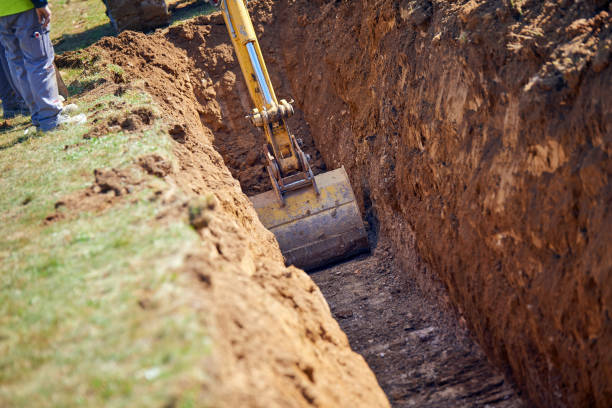Excavation Safety
From 2003 to 2017 there were a total of 373 trenching fatalities, with more than 80% of them in the construction industry. Excavation work is very common across the US and can pose a variety of different hazards to workers.
These Hazards include:
- Cave-ins
- Falls into excavation
- Struck by hazards
- Hazardous atmosphere
- Water accumulation
These hazards can be guarded against, and OSHA’s guidelines provide a basic set of preventative measures that must be followed (see link in sources below). Before implementing any hazard mitigation methods, the type of soil should be determined (Type A,B,C).
Excavation Hazard Mitigation
1.) To start off, workers should never enter a trench (over 5 feet) that does not have any protective system in place. Said protective system should be designed by a competent person. This protective system can include sloping, shoring, or shielding (sometimes called trench boxes).
2.) Excavations should be clearly 100% barricaded when unattended or in high traffic areas, and an emergency action plan should encompass excavation hazards.
3.) Heavy equipment and other employees should be prohibited from working above anyone performing work in a trench or excavation. This reduces unnecessary struck-by, falls, or cave in hazards. Materials should also be kept at least 2 feet from any excavation
4.) Water should not be allowed to accumulate in the excavation. Use pumps to remove water and prohibit employees from entering until it is free of water. Flooded excavations can affect the integrity of the soil.
5.) “Call before you dig”. Call 811 before starting any excavation to make sure there are no utilities and the excavation area.
6.) When there is potential for hazardous atmospheres in trenches/excavations, ensure air sampling is done in low points where gases can collect to ensure worker safety.
This is just a basic list of mitigation methods and should only be referred to as general guidelines. It is important to review all OSHA requirements as well as more stringent safety procedures.
Sources
https://www.osha.gov/laws-regs/regulations/standardnumber/1926/1926.651
